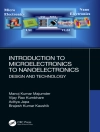Reactive inkjet printing uses an inkjet printer to dispense one or more reactants onto a substrate to generate a physical or chemical reaction to form a product in situ. Thus, unlike traditional inkjet printing, the printed film chemistry differs to that of the initial ink droplets. The appeal of reactive inkjet printing as a chemical synthesis tool is linked to its ability to produce droplets whose size is both controllable and predictable, which means that the individual droplets can be thought of as building blocks where droplets can be added to the substrate in a high precision format to give good control and predictability over the chemical reaction.
The book starts by introducing the concept of using reactive inkjet printing as a building block for making materials. Aspects such as the behaviour of printed droplets on substrate and their mixing is discussed in the first chapters. The following chapters then discuss different applications of the technique in areas including additive manufacturing and silk production, production of materials used in solar cells, printed electronics, dentistry and tissue engineering.
Edited by two leading experts, Reactive Inkjet Printing: A Chemical Synthesis Tool provides a comprehensive overview of this technique and its use in fabricating functional materials for health and energy applications. The book will appeal to advanced level students in materials science.
Table of Content
Reactive Inkjet Printing—An Introduction; From Inkjet Printed Droplets to Patterned Surfaces; Droplet Mixing; Unwanted Reactions of Polymers During the Inkjet Printing Process; Reactive Inkjet Printing for Silicon Solar Cell Fabrication; Reactive Inkjet Printing: From Oxidation of Conducting Polymers to Quantum Dots Synthesis; Reactive Inkjet Printing of Silk Barrier Membranes for Dental Applications; Reactive Inkjet Printing of Regenerated Silk Fibroin as a 3D Scaffold for Autonomous Swimming Devices (Micro-rockets); Reactive Inkjet Printing for Additive Manufacturing; Reactive Inkjet Printing of Metals; The Use of Reactive Inkjet Printing in Tissue Engineering












